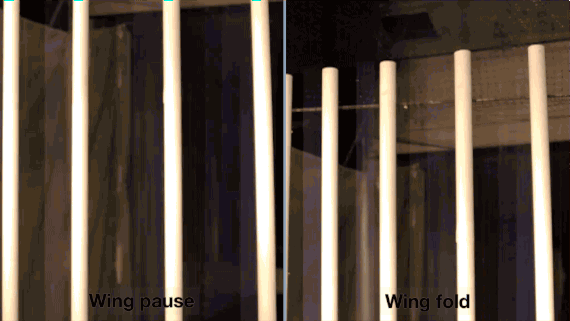Drones can learn from birds to beat flight obstacles in two simple steps

A study that shows birds use a simple combination of two postures to avoid obstacles in flight is hoped to help program drones and other unmanned aerial vehicles to avoid similar obstacles.
The University of Washington study found that in the first posture, the birds' wings are held wide out at the top of the upswing of their flapping. In the second, the birds tuck their wings back against their bodies. Using these postures the birds navigated the obstacles in their flight path.
The study led by David Williams is published in the Proceedings of the National Academy of Sciences.
Williams and colleagues built a 20-metre-long flight corridor with a number of vertical poles for birds to fly through.
They fitted pigeons with small backpacks that powered a series of tiny, infrared LEDs, which were placed along the birds' backs, at their wingtips, near their wing joints, and on their heads.
As the birds flew through the corridor, the LEDs were tracked by an array of five high-speed cameras, allowing researchers to determine their postures precisely.
Such stereotyped motor programs seen in insects stimulate the muscle and the exoskeleton or the tendons attached to that muscle control most of the motion. In higher-order animals, motor programs were expected to be more complex.
But it turns out the birds use very simple motor programs to achieve energy minimization and robustness in motion.
The first posture interrupts their wing beat cycle for shorter periods of time, so they tend to lose less height, and their wings are ready to hit the air running. This reduces the amount they're going to rotate or be disrupted if they do collide with anything.
The team will next include horizontal obstacles similar to tree limbs.
Williams believes that brains built into the material structure of the flying object like a drone can improve the stability more than inputs fed into the computation controlling the object.
© Copyright IBTimes 2025. All rights reserved.





















